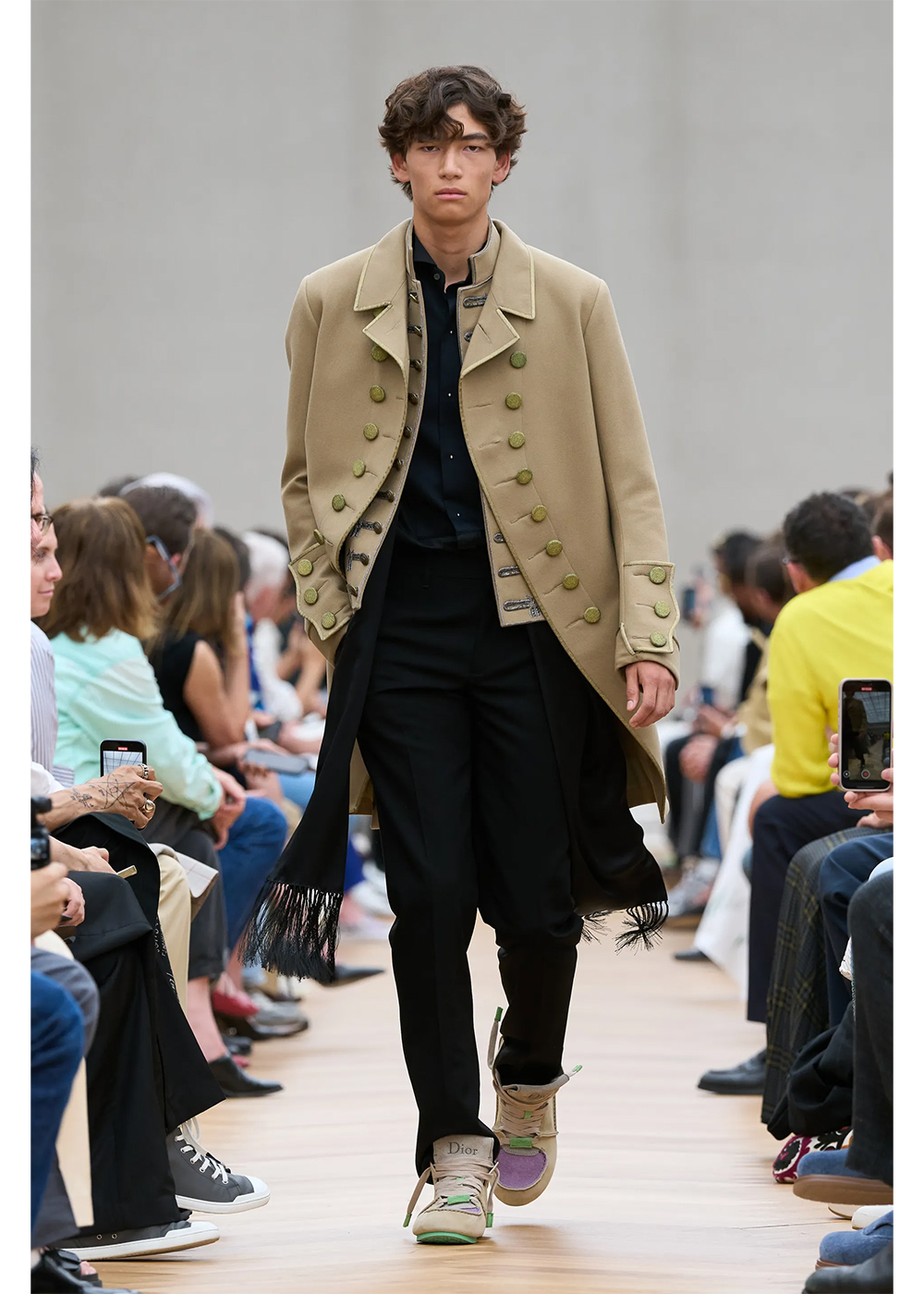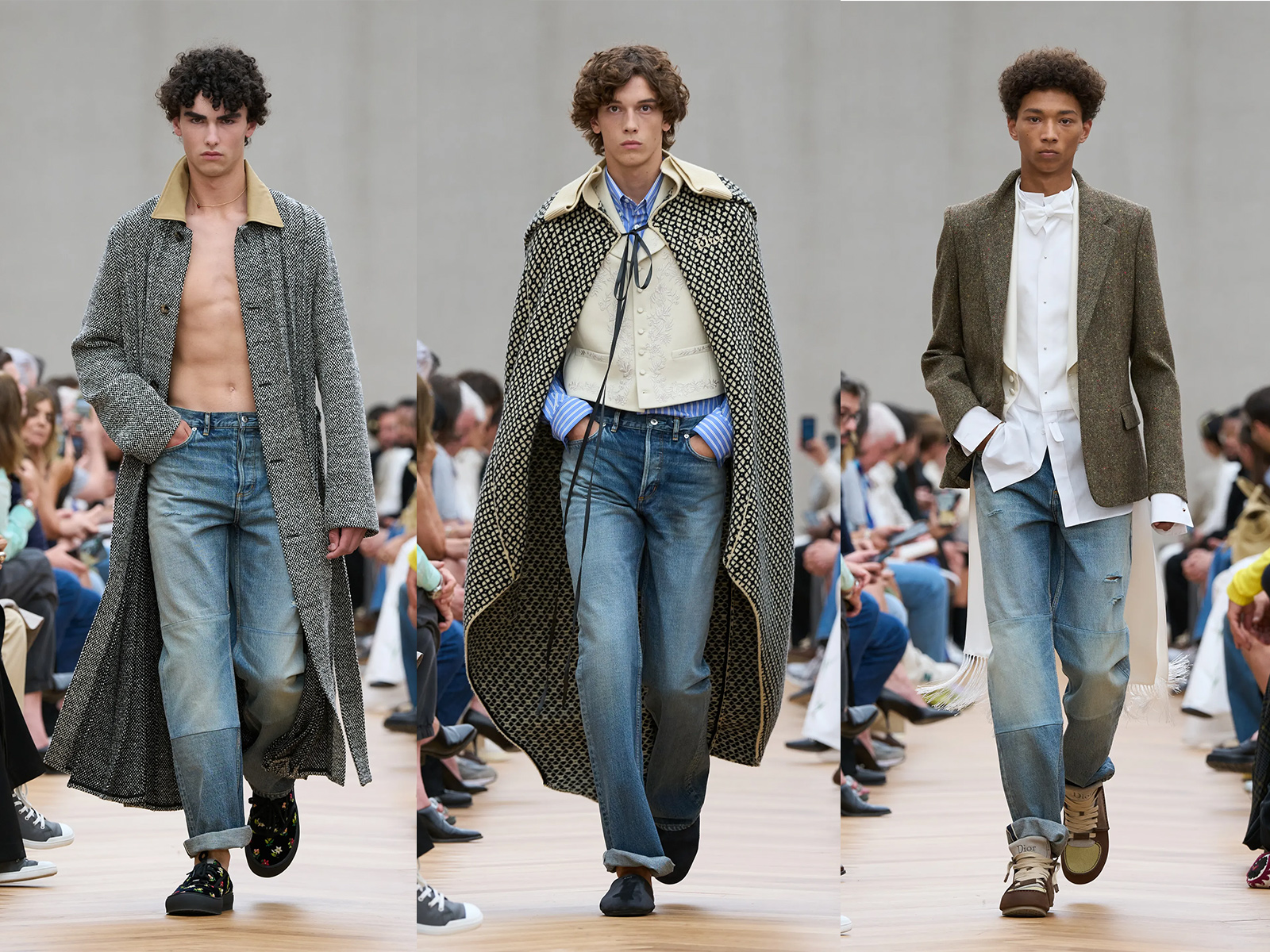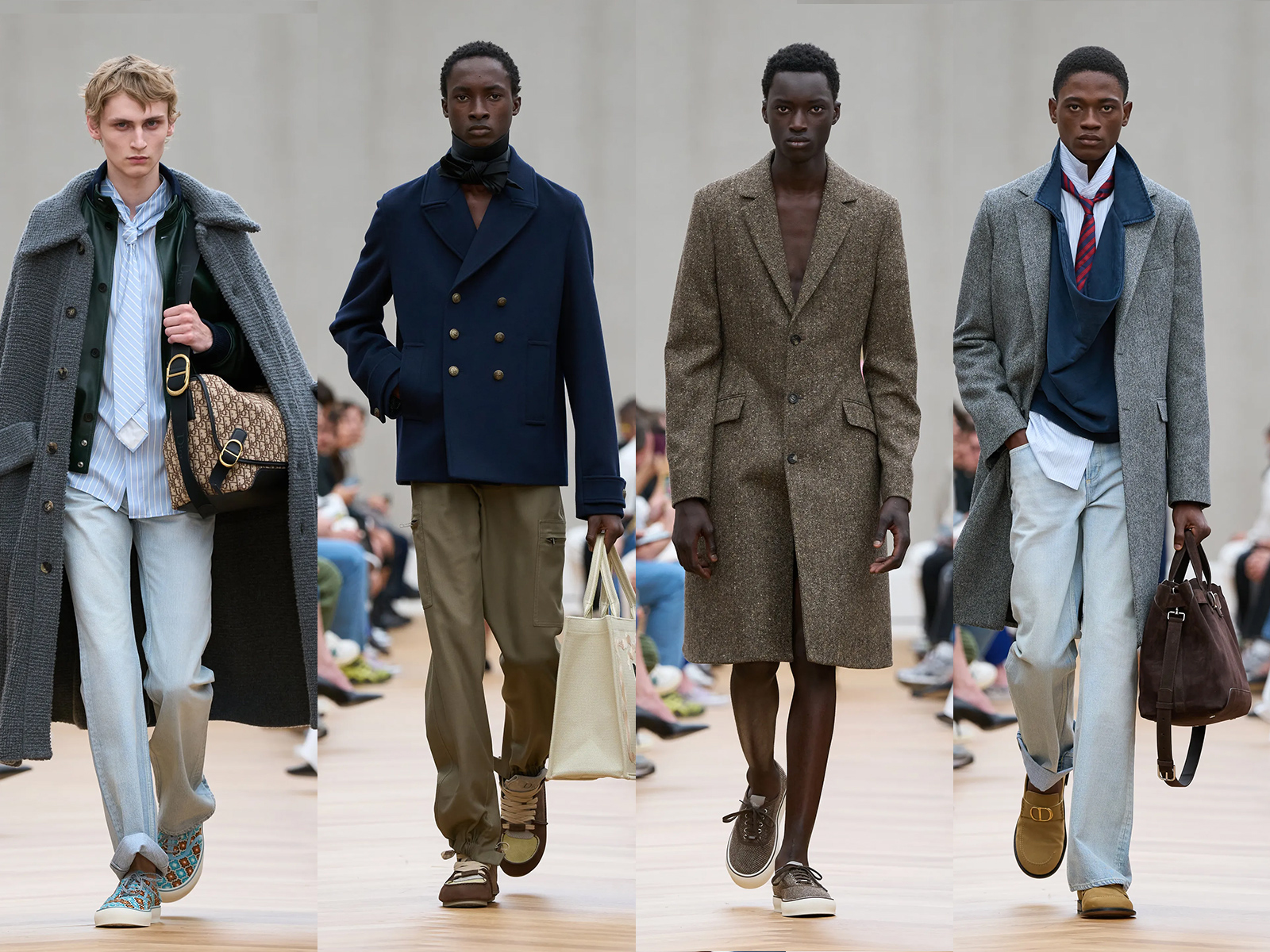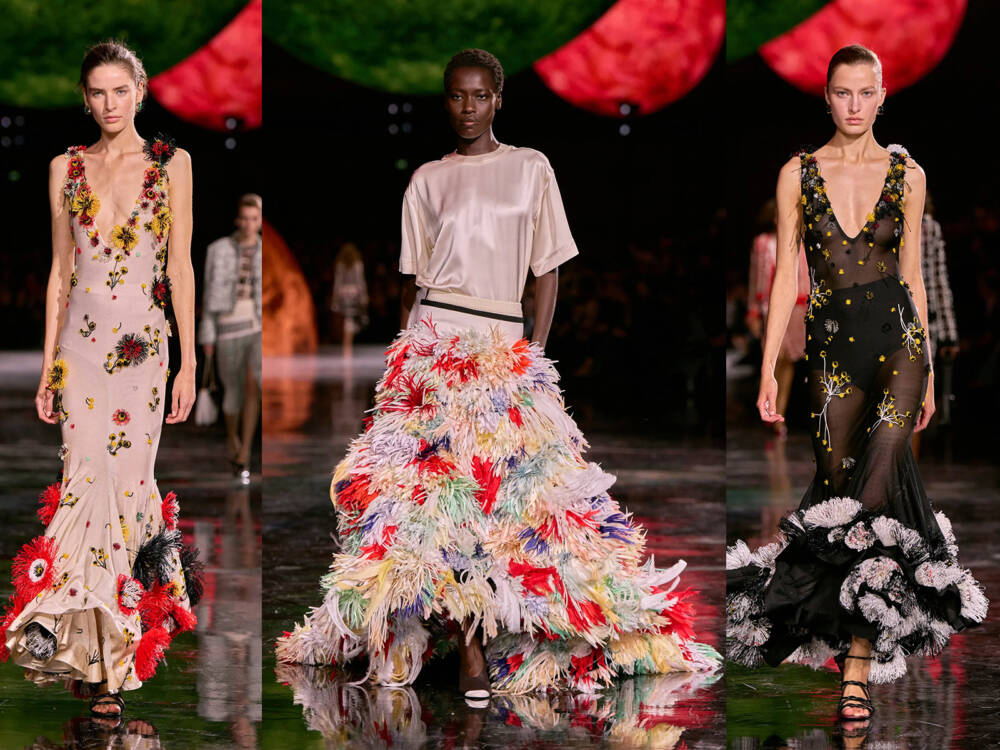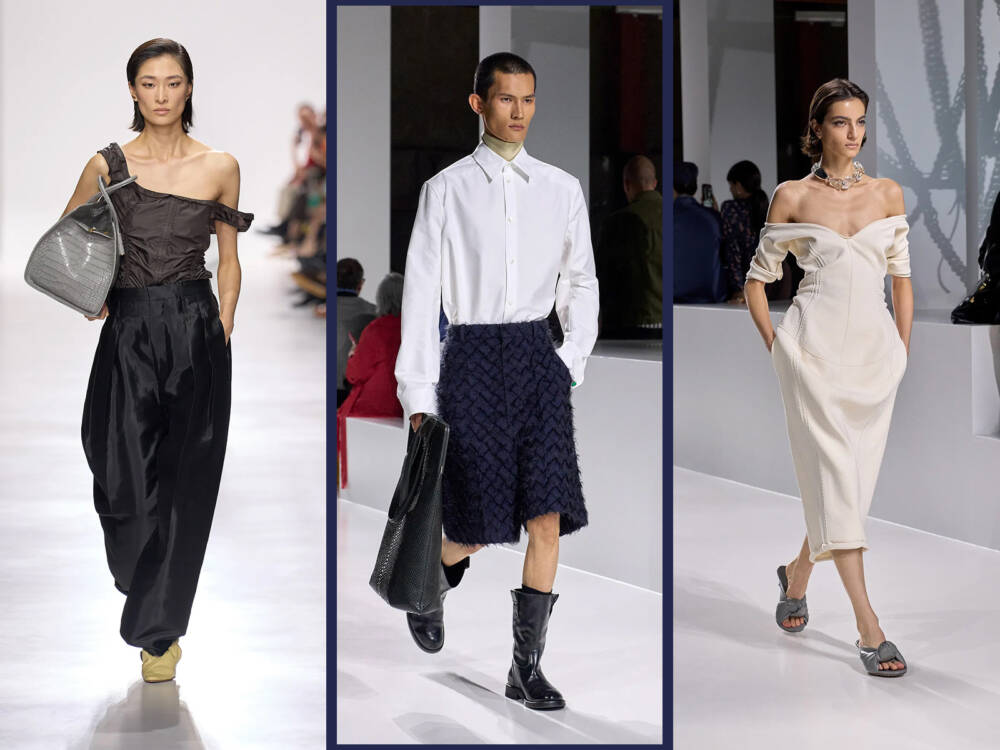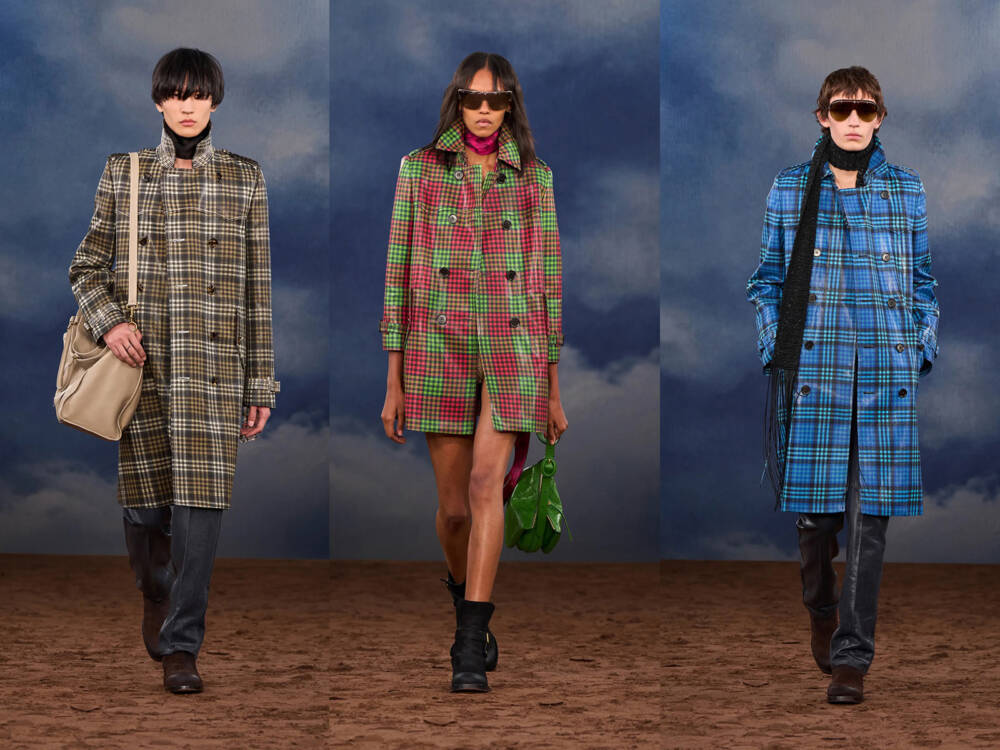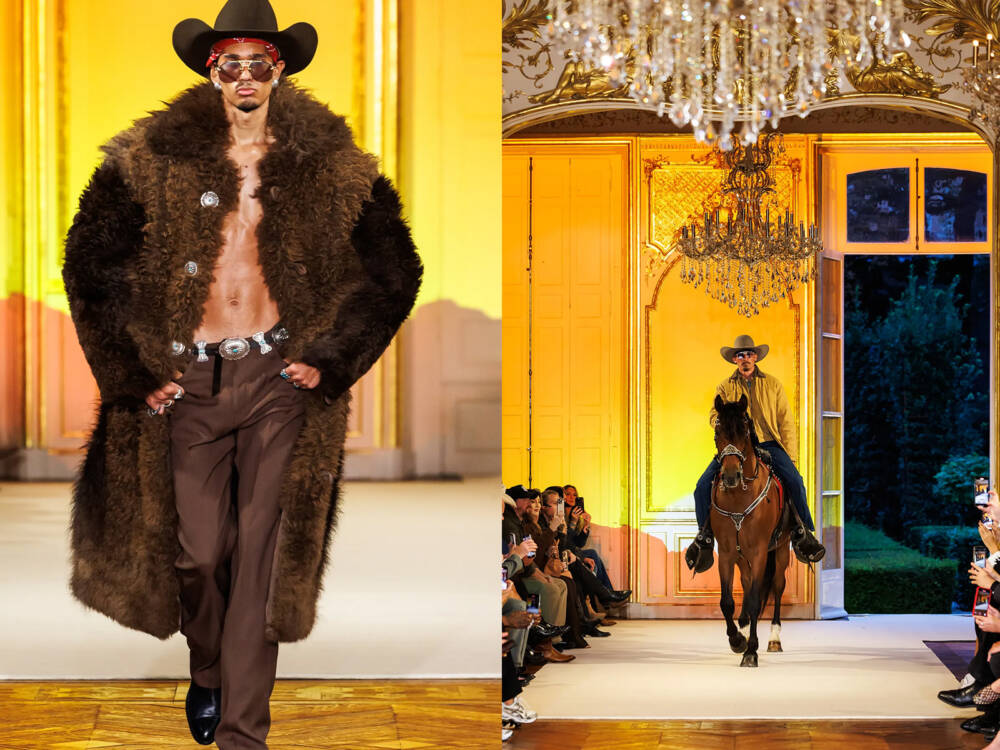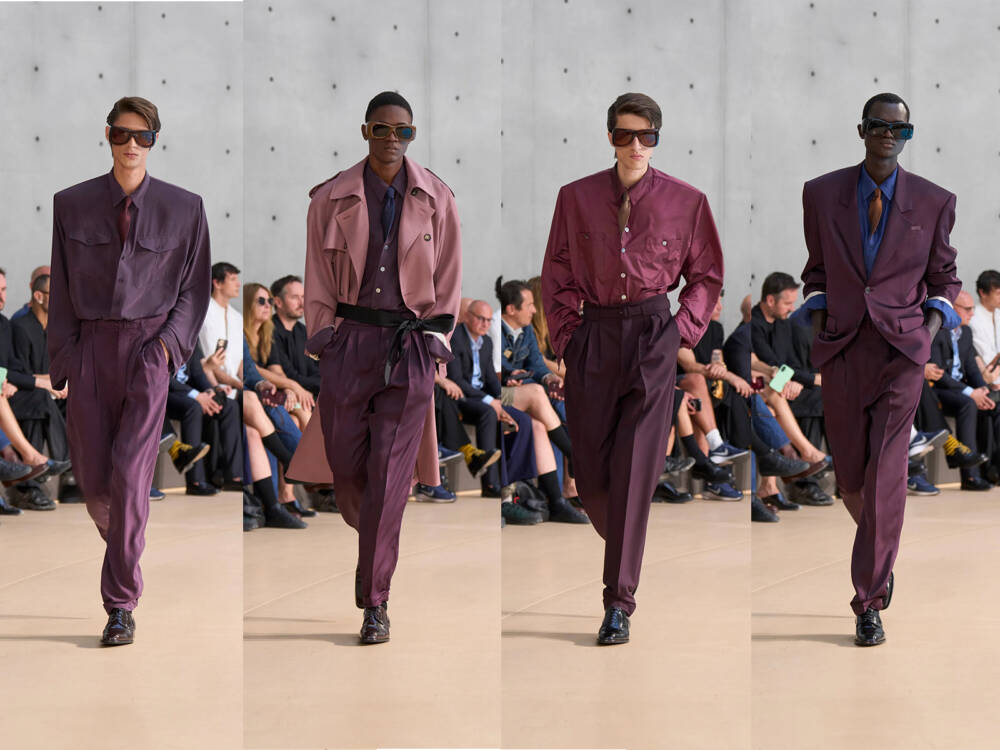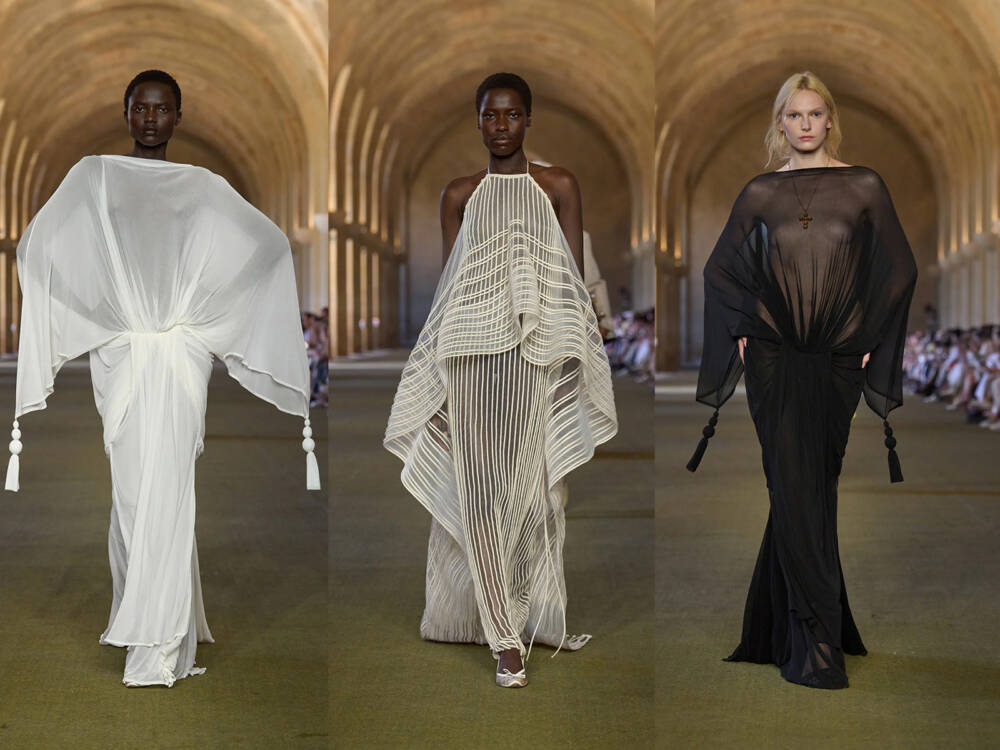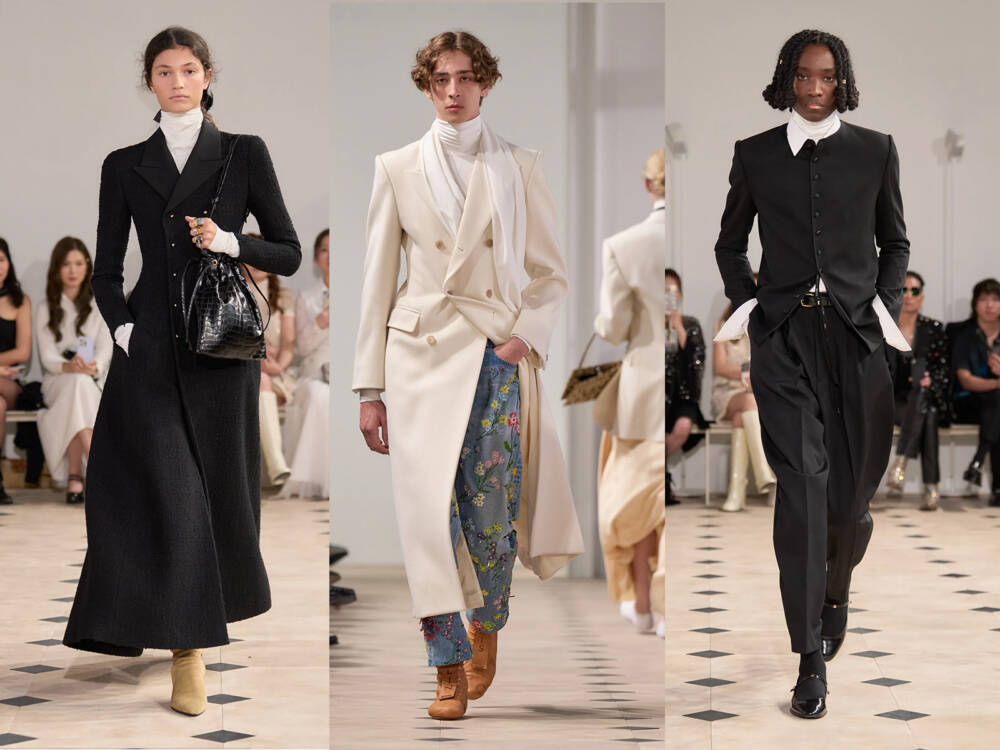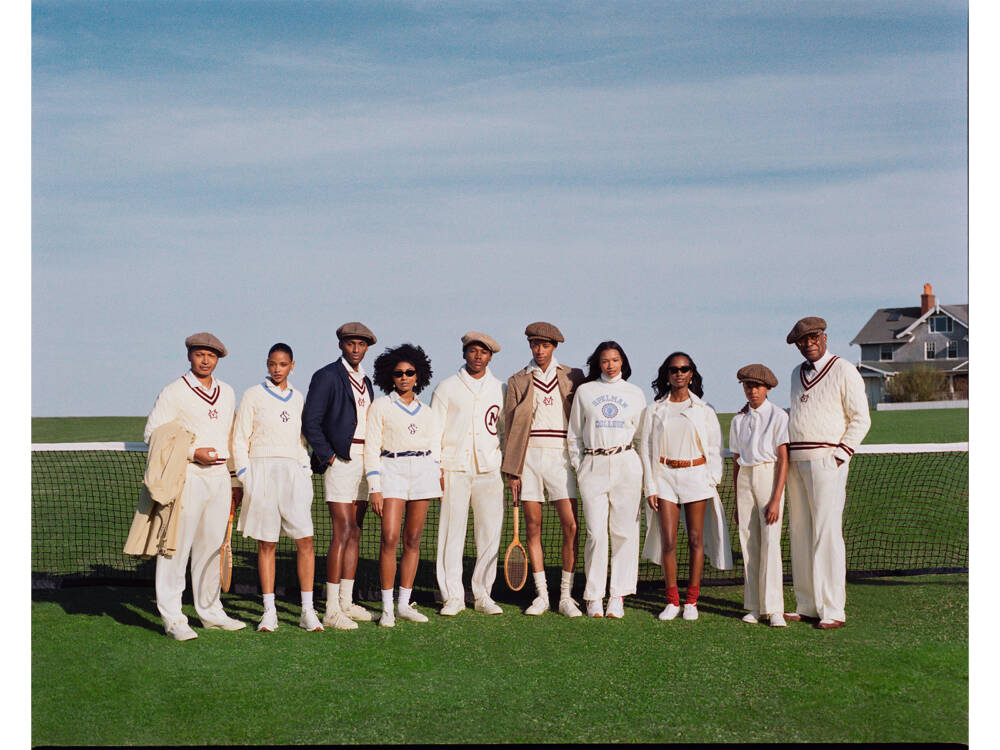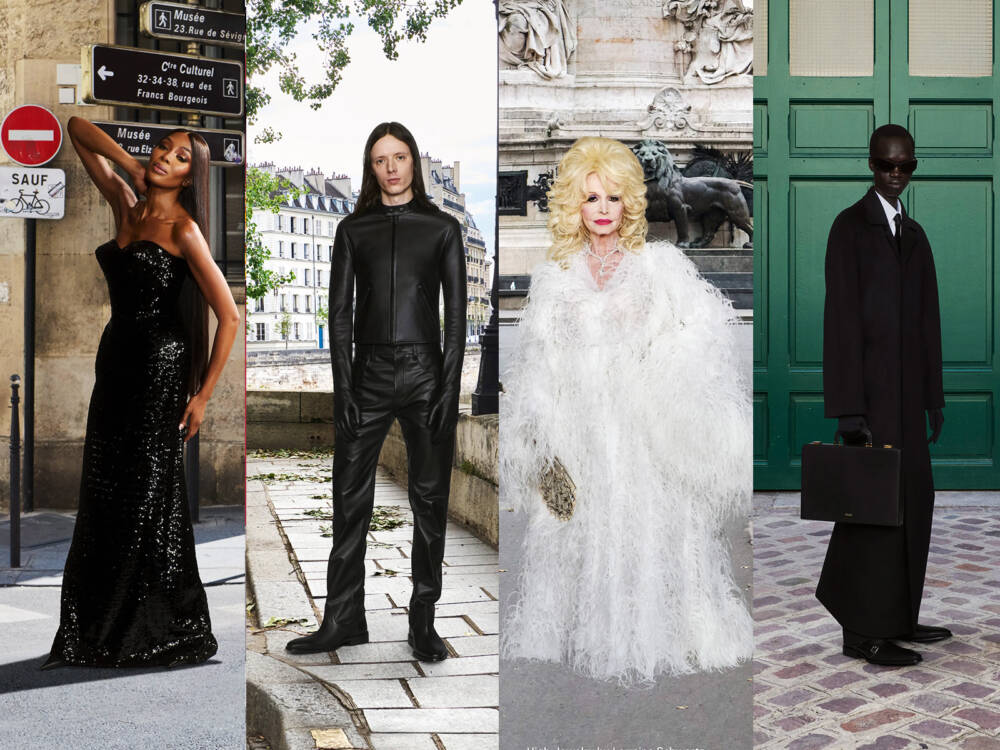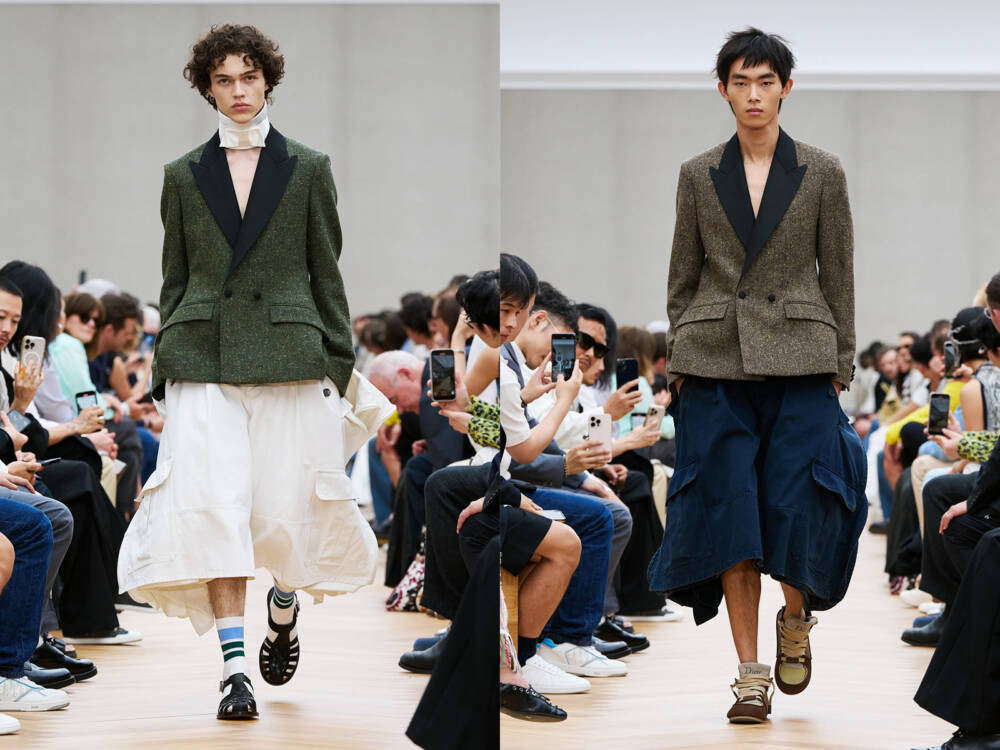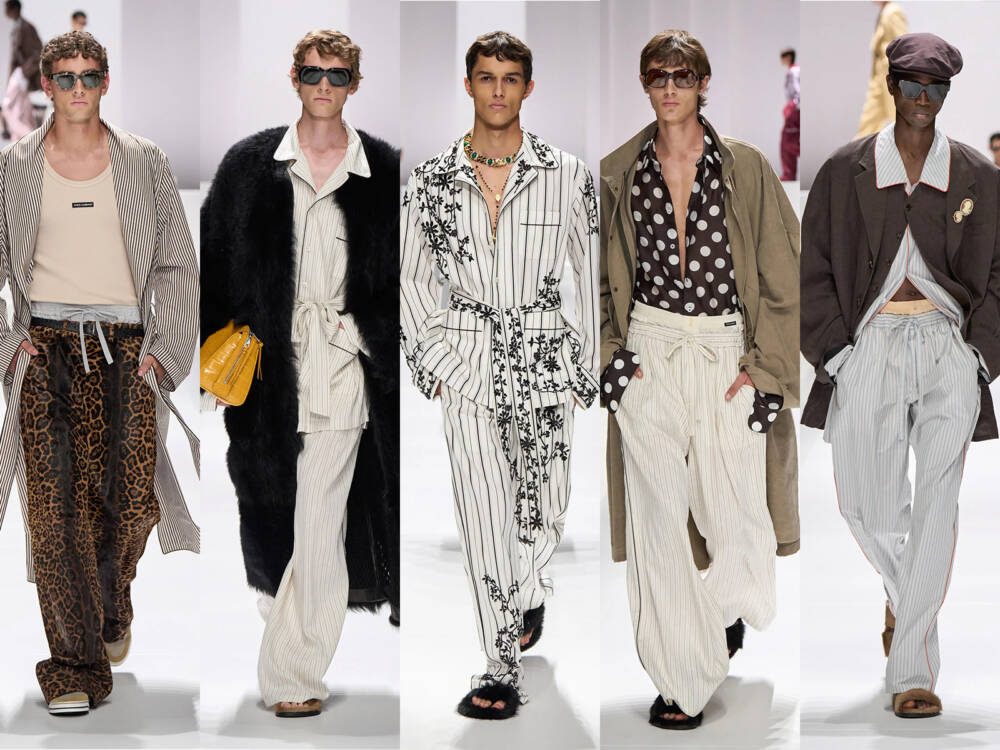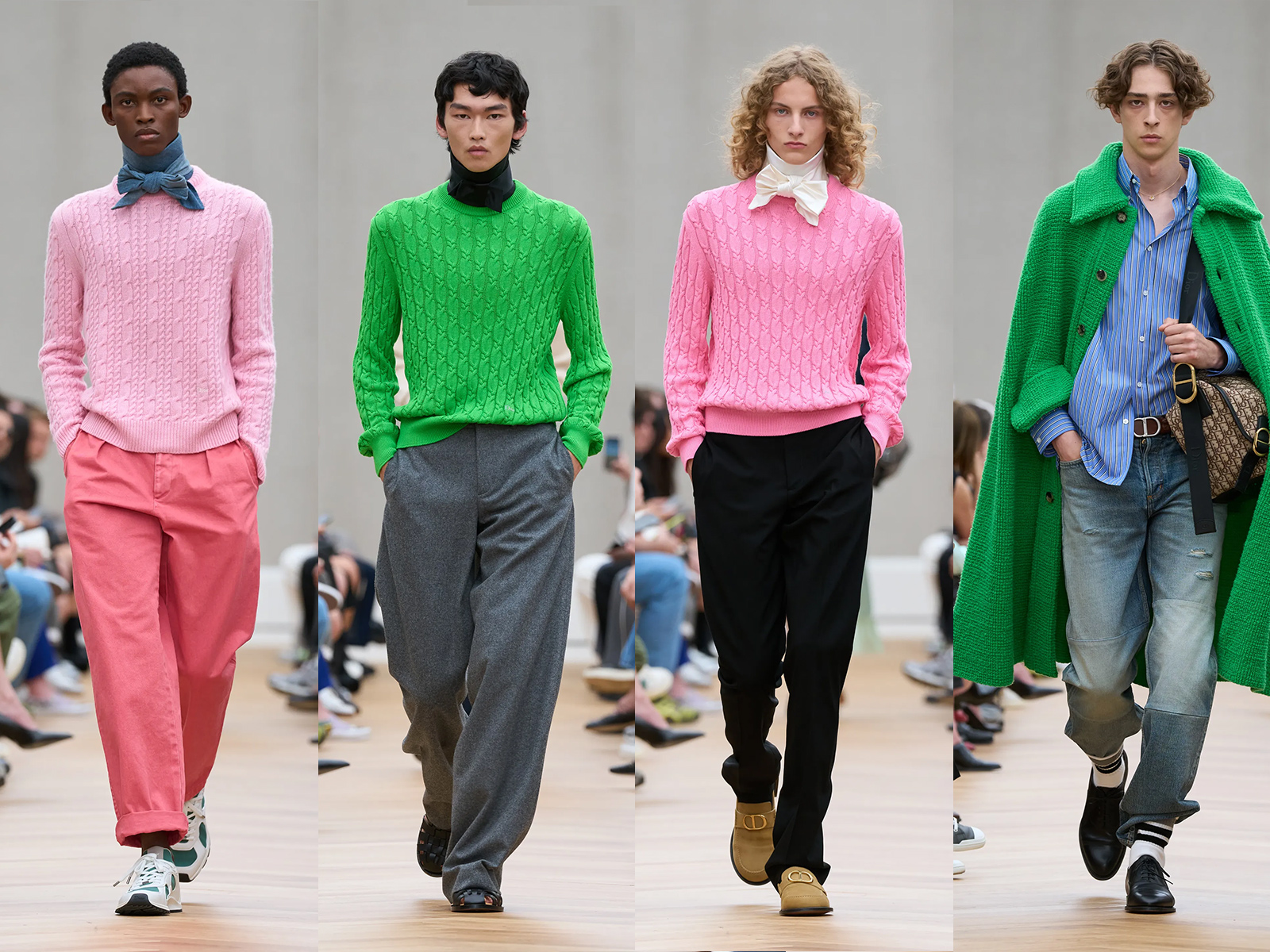
 Dior Mens SS 26
Dior Mens SS 26
Jonathan Anderson’s inaugural Spring/Summer 2026 collection for Dior Men arrived with quiet authority and artistic precision. Held at the Hôtel National des Invalides in Paris—a site steeped in French grandeur—the show unfolded against a monumental black-and-white reproduction of Christian Dior’s original Avenue Montaigne salon. The dramatic gesture set the tone: this was no break from tradition, but a reawakening.
Inside, the venue was transformed into an intimate gallery space, with velvet-lined walls and carefully selected Old Master still-lifes by Jean-Siméon Chardin, offering a subtle nod to Christian Dior’s background as an art dealer. Guests were seated close to the runway, evoking the spirit of Dior’s original salon presentations, and placing the emphasis squarely on the clothing, where Anderson’s voice was unmistakably clear.
Look one, made an immediate declaration. A sculpted waistcoat, darted and cinched with Bar jacket discipline, hovered above a pair of precisely tailored, mid-thigh wool shorts. The silhouette was sharp yet fluid, polished yet subversive. These shorts—a standout throughout the collection—recurred in chalk-white silk faille, sun-faded bouclé, and washed gabardine, offering a leggy counterpoint to corseted tailoring and whisper-thin outerwear.
Waistcoats were the season’s power piece, appearing in a spectrum of interpretations: varsity-ribbed and cricket-striped, sheer-backed and organza-layered, or delicately embroidered with Dior’s lucky lily-of-the-valley motif. Some recalled the collegiate prep of an Oxbridge match day, others leaned into Anderson’s flair for the surreal and sculptural, with necklines veering off-kilter or hem lengths exaggerating volume.
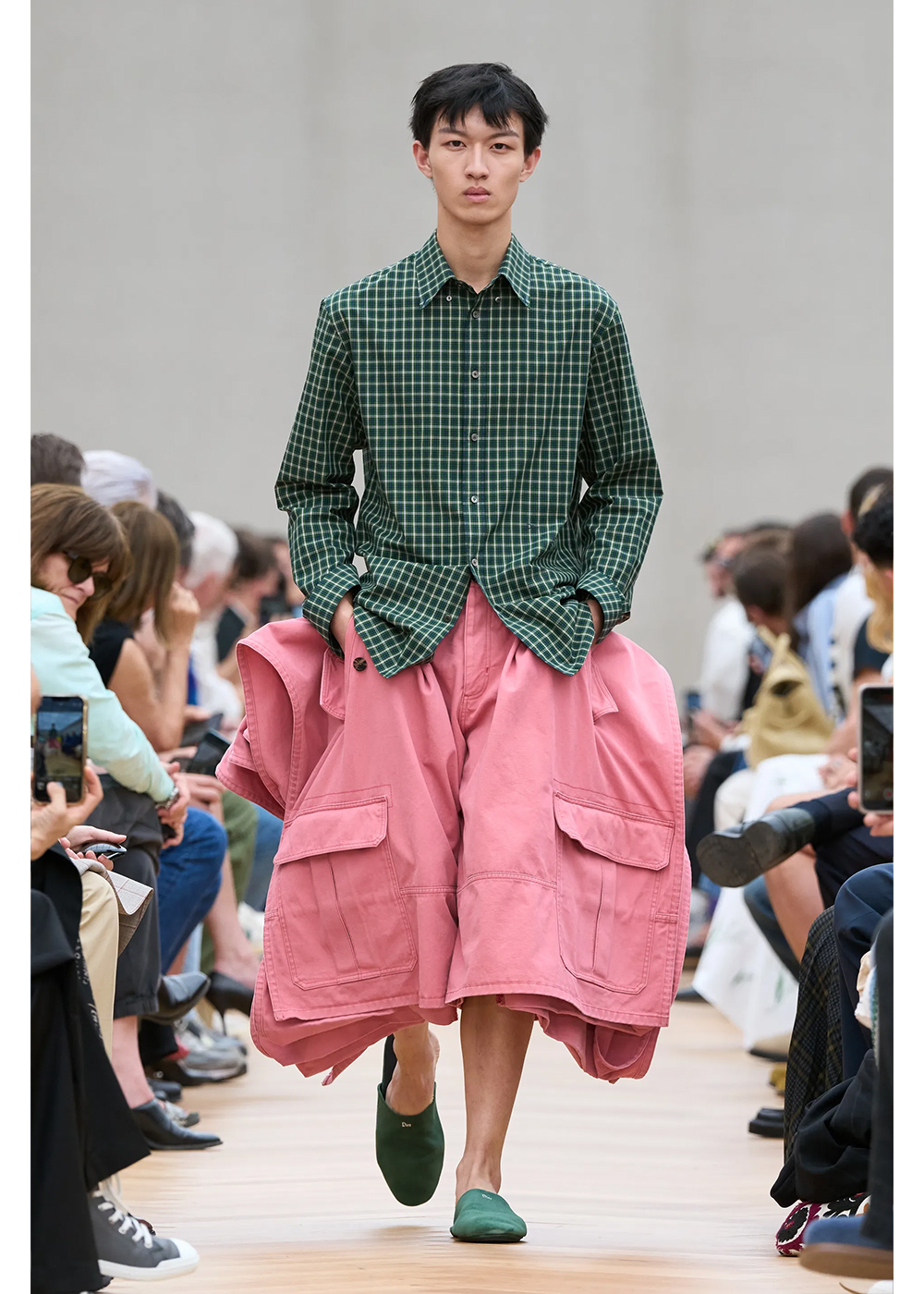

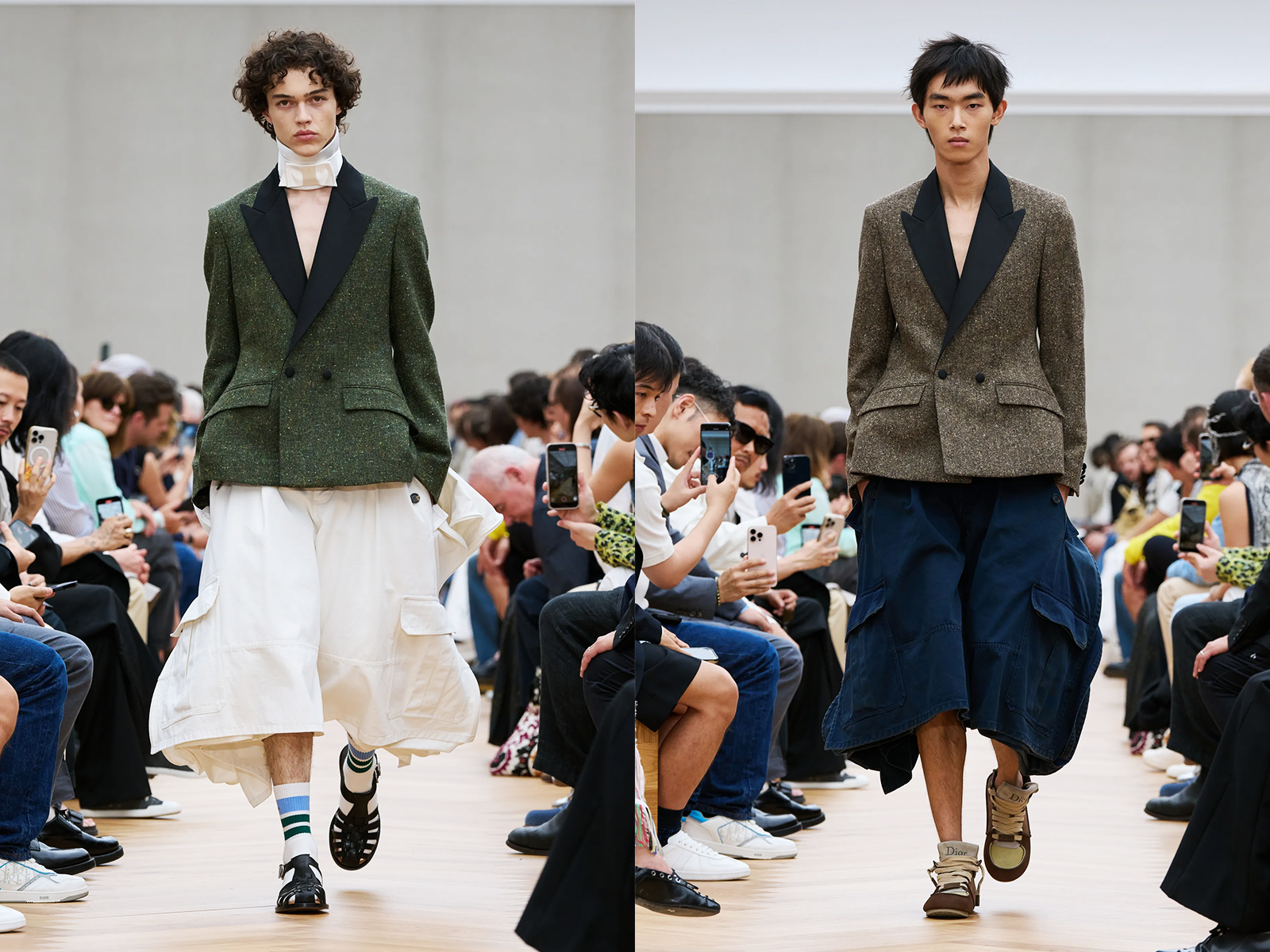



Anderson’s genius lies in taking familiar codes and twisting them into something unexpected. Here, prep met Parisian refinement. Navy blazers with scarf-like lapels, seersucker rugby shirts reimagined as silk tunics, and leather corsets layered over Breton stripes revealed his typical sleight of hand. A fisherman’s cable-knit sweater—transposed into chalk-white silk—nodded to Anderson’s Irish roots, while translucent trenches etched with Dior’s cannage pattern gently referenced the house’s women’s line.
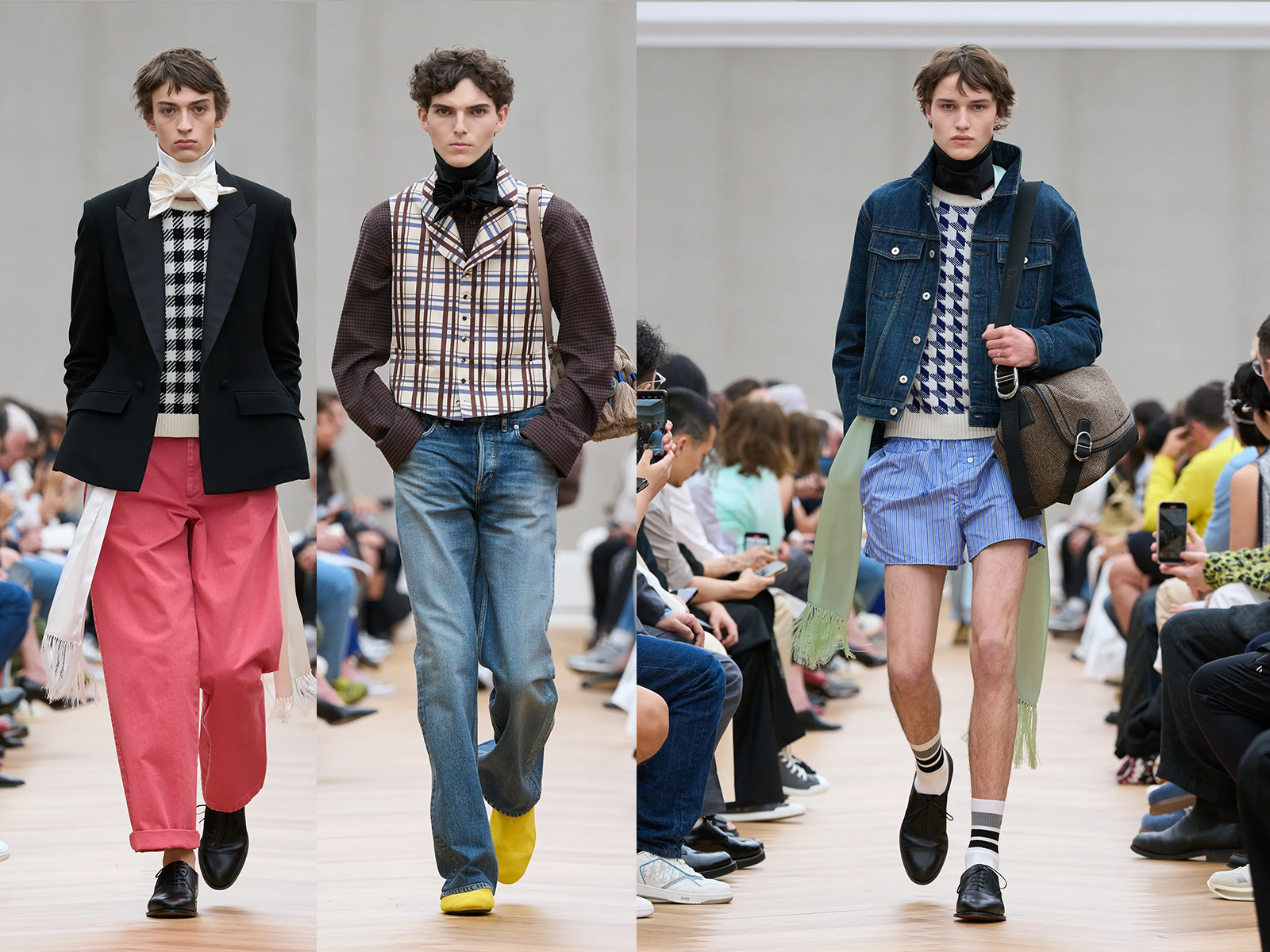

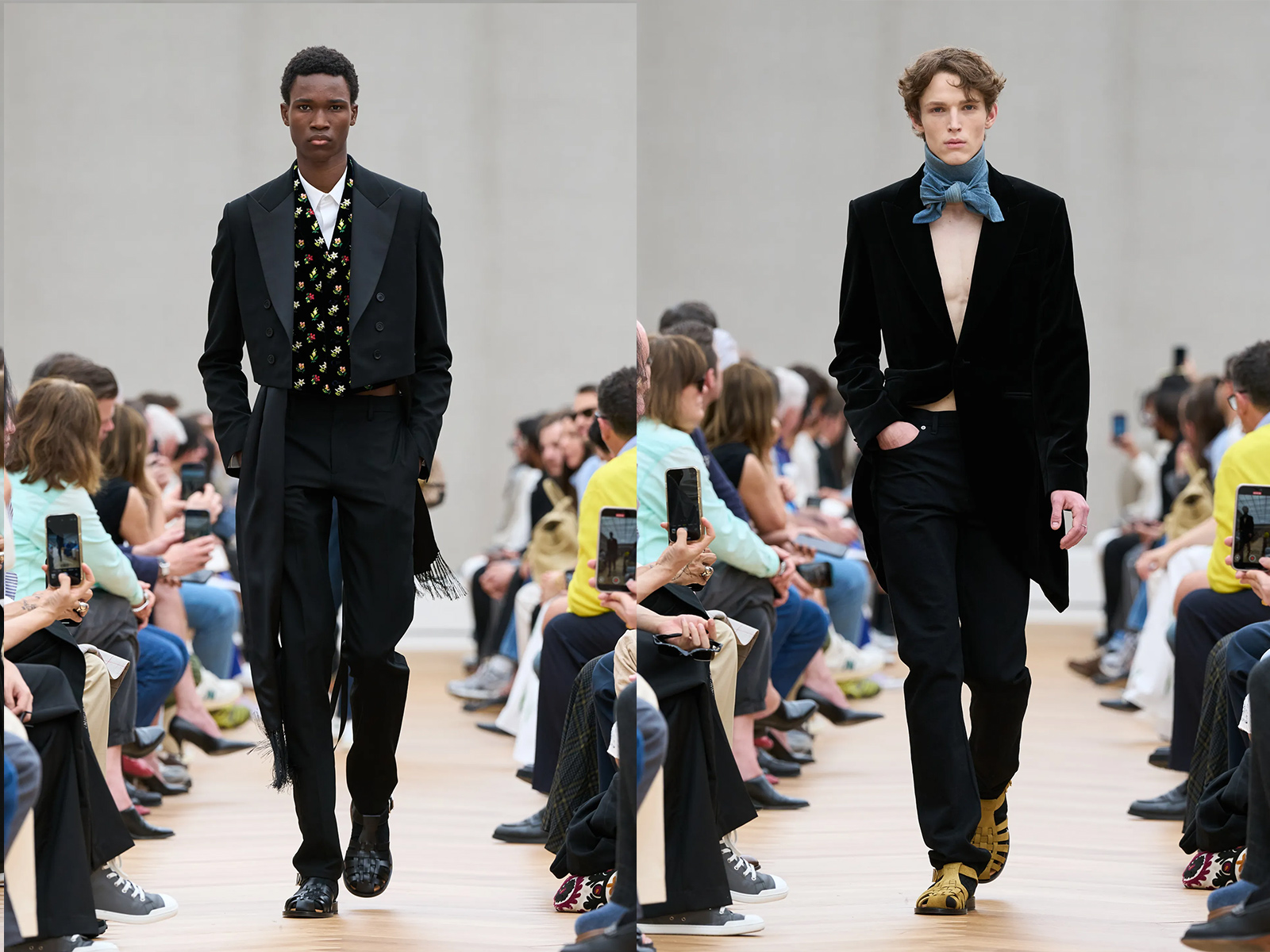

Anderson’s expansive design vocabulary—shaped by his own JW Anderson label and his transformative work at Loewe—was elegantly distilled here. The collection never felt referential for its own sake; rather, every influence circled back to Dior’s essential ethos: a blend of structure and softness, tradition and modernity.
While the collection was clearly menswear, Anderson deftly referenced elements from the Dior women’s universe. The soft blush trenches, sheer overlays, and archival floral motifs connected his work to the house’s broader lineage. His dialogue with Maria Grazia Chiuri’s vocabulary felt respectful and intentional—a gesture toward a more fluid Dior identity.
The crowd mirrored the moment’s magnitude. Rihanna—pregnant and radiant—sat front row in sculptural Dior cannage, while A$AP Rocky, ever the fashion provocateur, wore an archival Galliano-era coat. Fellow designers Kim Jones and Pierpaolo Piccioli looked on with palpable admiration. Miuccia Prada, herself no stranger to the fusion of utility and elegance, exchanged a nod with Anderson after his bow—a gesture that said everything.
Jonathan Anderson’s first outing for Dior Men doesn’t just mark a new chapter—it rewrites the tone of the book. By embracing the elegance of tradition and bending it toward his eclectic, future-minded vision, he affirms what Christian Dior knew from the beginning: fashion is as much about precision as it is about imagination. And sometimes, it arrives in a perfectly tailored short, stepping boldly into the summer light. Dior.
